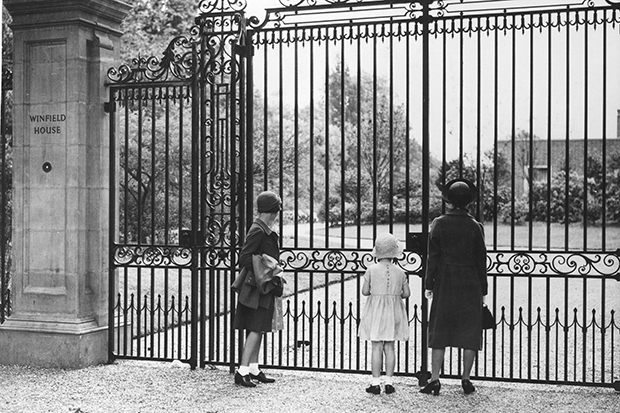The idea of private schools as bastions of academic achievement has taken me some getting used to. When I left school 30 years ago, private schools were places of cold showers, beautiful but crumbling buildings and expansive playing fields. But good exam results? We never knew, of course, because exam results were not published, but there was always a suspicion — at least among grammar-school pupils like me — that private schools had more than their fair share of duffers who gained a leg up in life through friendships made on the rugger field rather than hard study.
Yet since the Department for Education started to publish school exam results two decades ago, the results have been there for all to see. In 2014,7 19 per cent of A-level entries at independent schools were graded A*, compared with a national average for all schools of 8 per cent. It is a yawning gap which has stood out year after year, but why? It is easy to complain about ‘lack of resources’, but rather than moan about the unfairness of it all, one state school has set out to discover why children at independent schools consistently outperform their peers at state schools.
Christ the King Sixth Form College is a trio of schools in Lewisham, Brockley and Sidcup. Its own results are impressive, with pupils passing 98.4 per cent of the A-levels they took last year. When some money became available from the Mayor’s London Schools Excellence Fund, it instigated a project — involving Eton, St Paul’s, Wellington and several other state and independent schools — to see if there were lessons which it and other state schools could learn from the independent sector. Teachers were sent to observe and take lessons in each other’s schools. Meanwhile, pupils were consulted on what they thought of teaching methods, and the results studied.

It turned out that there was no single, obvious answer, but several things did stand out, according to Sue Sing of Christ the King Sixth Form College, who has managed the study. ‘A strong subject knowledge is incredibly important,’ she says, ‘as well as being able to develop that knowledge.’ Many of the independent school teachers had degrees from top universities; a large number had postgraduate degrees. They were thus able to stretch the most able of their pupils and engender an intellectual curiosity in their pupils.
The independent school teachers, adds Sing, tended to work in large departmental teams, which gave them the ability to bounce ideas off each other. ‘In state schools you have much smaller numbers, and sometimes you have departments made up of one teacher,’ she says. ‘In some cases, a physics teacher would have to teach other subjects such as chemistry and biology.’
In the independent schools, lessons were found to crack on at a much faster pace — sometimes too fast for some pupils, who suggested they might like a bit more consolidation time. Faster progress was possible, says Sing, because independent schools were able to gather much larger cohorts of able pupils. Lessons in state schools tended to go a little more slowly, she says, partly because of the much wider range in ability of the pupils.
This will reinforce what for many people has long been obvious but which David Cameron refuses to recognise: that most state schools are hampered by being unable to select pupils according to ability. It is all very well streaming pupils, but when you get to the upper end of the secondary school age range, where there are a great number of subjects on offer and relatively few pupils doing each one, it becomes extremely difficult to create viable classes of high-achieving pupils — or, for that matter, medium and lower-ability pupils.
Last month the Sixth Form Colleges Association revealed that some of its members had been forced to cancel courses in sciences and languages because they have been unable to create financially viable classes in those subjects. Christ the King Sixth Form College has already changed its teaching methods in response to the study. ‘What we have been able to do is to organise lessons so that we have one group of pupils across the three school sites,’ says Sing.
Other popular explanations for the differential in educational achievement between state and independent schools seemed to play less of a role. While private schools often like to boast in their brochures about smaller class sizes, and some in the state sector are apt to use large class sizes as an excuse for underachievement, this turned out to be based on a false premise.
‘When we compared class sizes, sometimes they were smaller in the state sector,’ says Sing, ‘but not always.’ Neither did pupil behaviour seem to be much of an issue, possibly because the study included only Key Stage 4 and 5 classes, where pupils are more mature anyway.
Ever since Cameron ditched his commitment to selective education, a month after becoming Conservative leader in 2005, the party’s policy on schools has had a huge hole at the centre. It wants state schools to learn from the private sector, and yet it denies them the freedom which virtually all leading private schools exercise unapologetically: the right to select their pupils on merit.
David Cameron is not shy about having attended Eton, even if he is often assumed to be. He praised it as a ‘great school’ in one of his conference speeches, drawing applause from an audience which seemed almost caught out by the licence he was giving them to cheer something they had otherwise assumed they must feel guilty about. George Osborne has braved negative PR — of which there turned out to be very little — by putting his own children down for private schools. So why, when evidence suggests that teaching succeeds at a faster pace when pupils are better matched in their ability, does the government continue to confine academic selection to the private sector?
David Cameron saw dumping a commitment to new grammar schools as part of his efforts to ‘detoxify’ the Tory brand. If that decision provided any help in this at all — which I doubt — that is a rather lesser issue than raising attainment in state schools to meet standards in the private sector.







Comments